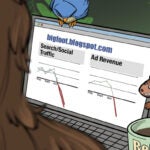Here’s today’s AdExchanger.com news round-up… Want it by email? Sign up here.
Late To The Party
Nielsen is gearing up to launch its cross-channel measurement platform, Nielsen ONE, in December.
On Tuesday, the TV ratings giant added YouTube and YouTube TV campaigns to its “always on” Digital Ad Ratings (DAR) tool.
Wait … didn’t this already happen?
Not exactly. Nielsen launched a different product called Four-Screen Ad Deduplication over the summer to deduplicate YouTube audiences from other media buys. And last week, Roku became a pilot partner for enabling Nielsen’s ad deduplication methodology as part of Total Ad Ratings (TAR).
But DAR and TAR are two different things.
DAR reports continuous campaign measurement for YouTube ads across CTV, desktop and mobile, whereas TAR is designed to deduplicate audiences across digital and linear TV channels to create a TV and online video ad ratings product, Kim Gilberti, Nielsen’s SVP for product management, tells AdExchanger.
It may sound confusing, but, acronyms aside, deduplication is the common denominator.
With continuous measurement of digital campaigns through DAR, now including YouTube, Nielsen is “helping deliver comparability across platforms,” Gilberti says, which is also the point of TAR.
She says that both additions are stepping stones toward the release of Nielsen ONE.
Free Falling
Google provides unbeatable, free consumer tech in return for ad inventory and data.
It is the way.
But Google is starting to get creative with its definition of “free,” and that applies to businesses and consumers.
On Reddit and Twitter, developers recently shared screen grabs – and rumors – of a test to make 4K video part of YouTube’s Premium subscription. Makes sense, since a move like this could boost subscriptions while simultaneously lowering YouTube’s content hosting costs.
Google has also made other changes across its portfolio that chip away at the promise of free.
The YouTube 4K video test follows another recent YouTube test for video ad pods with 10 unskippable units. One way to increase subscriptions is to make the free, ad-supported experience unbearable.
Starting in July, Google began charging businesses that used its basic service, forcing them to sign up Google Workspace accounts. Gmail, Google Drive and Photos added data caps, meaning that one-time free users must now become cloud subscribers.
Oh, and when Universal Analytics, the freebie version of Google Analytics, goes away next year, Google will no longer host the data. To continue to own and use that data, businesses must pay to host it elsewhere.
And we’re not done yet: Last year, Google began charging for photo and data storage on Pixel phones, too.
Ads, Ads Everywhere
Google may be backpedaling on freebies, but it’s still jamming ads and paid products into more places than ever before.
For example, Google forces brands to advertise across all channels via Performance Max, the ad product that is eating all of Google’s other ad products.
Advertisers no longer buy Gmail campaigns, specifically. They create Performance Max campaigns which go to Search, YouTube, Maps, Gmail and the Google ad network … but with no controls to target just one channel or to limit where ads run across the portfolio.
Businesses with no interest in Gmail campaigns may find themselves advertising there anyway, if the Google machine says so.
Google introduced a raft of shopping and search ad units in May – and also packed the entire shopping ad business into Performance Max, of course.
Now, Google is launching a chat feature so searches for services or certain products that require expertise (like a mountain bike, say) can receive a real-time response. Getting users to interact with the chat box also initiates a 30-day retargeting window, which is a nice carrot for Google’s advertisers.
But Wait, There’s More!
Digiday partners and invests in Ari Paparo’s startup Marketecture, deepening its ad tech content and expertise. [release]
Xperi has completed its spinoff into a product-focused business, including the TiVo OS. The newly relisted independent public company also has connected car ambitions. [Fierce Video]
South Korean ecommerce company Naver bought US fashion resale platform Poshmark in a $1.2 billion deal – but investors are dubious. [Reuters]
Ads.txt mislabeling is adding to the ad industry’s fraud problem. [Adweek]
Google introduces a “results about you” tool to delete search links with personally identifiable info. [tweet]
Robin Berjon: A signal for child privacy. [blog]
You’re Hired!
Analytics platform Amplitude taps marketing vet Tifenn Dano Kwan as CMO. [release]















